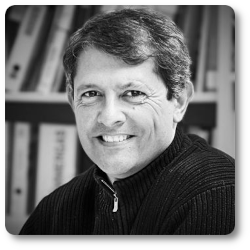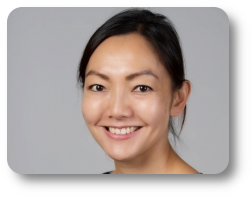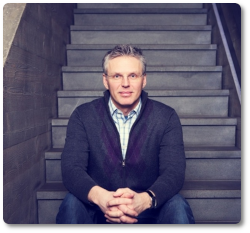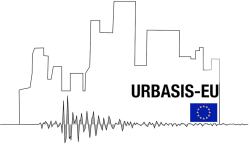International Advisory Board Members
Three scientific experts have committed to take part in the URBASIS project being members of the International Advisory Board. The aim of this board is to give scientific advices, provide training and participate to workshops and annual general assembly in order to bring high level expertise to the Early Stage Researchers and to promote the international dimension of the issues addressed by the project.

Paolo BAZZURRO
Dr. Paolo Bazzurro is professor of Structural Design at University School for Superior Studies (IUSS) in Pavia. He earned his M.S., Engineer Degree, and Ph.D. in Civil Engineering at Stanford University where he has been part-time Consulting Assistant Professor from 2001 to 2005. Before joining IUSS, he gained more than 25 years of professional experience in Europe and United States dealing with risk assessment of monetary losses caused by natural events for corporate clients, insurance companies, reinsurance companies and brokers, sovereign and local governments and other public institutions. In this period he led projects dealing with the assessment of hazard and risk caused by earthquakes, hurricanes, flood and tsunami to a variety of onshore and off shore structures and portfolios of assets located in five continents. In this period, he worked for 11 years as a Principal Engineer and Director of Risk Engineering and Analysis of AIR Worldwide where he led the risk assessment work and contributed to the design of the final risk mitigation strategies in ground-breaking projects such as CatMex and MultiCat, which supported the issuance of insured-linked securities and more traditional insurance coverage for the Government of Mexico. He also carried out the risk assessment work for the Pacific Catastrophe Risk Assessment and Financing Initiative in the Pacific Region for the World Bank, which brought to fruition the first insurance facility in that region of the world. Over the years he has also led many research and application-oriented projects for prestigious organizations such as the United States Geological Survey, the Pacific Earthquake Engineering Research (PEER) Center, and the Earthquake Engineering Research Institute (EERI), for which he led the two damage reconnaissance missions after the 2002 Molise and 2009 L’Aquila Earthquakes. From 2009 to 2015 he was the Deputy Chair of the Scientific Board of the Global Earthquake Model (GEM) and members of several others international scientific and editorial boards. In the period 2013-2017 he was a member of the Seismic section of the Great Risks Committee appointed by the Italian Prime Minister office and Head of the “Hazard and Risk Assessment” Section at the European Centre for Training and Research in Earthquake Engineering (EUCENTRE) Foundation in Pavia. He is currently Member of the Working Group for the Review of the Italian Probabilistic Seismic Hazard and Tsunami Maps” that was appointed by the Italian Prime Minister office to provide guidance to the Italian Department of Civil Protection (2017-2019). He authored more than 150 refereed publications in different engineering areas mostly related to risk assessment.

Emily SO
Dr. Emily So is a Senior Lecturer at the Department of Architecture at the University of Cambridge and the Director of the Cambridge University Centre for Risk in the Built Environment.
She is also the Director of Studies in Architecture at Magdalene College and Queens’ College, and Fellow and Admissions Tutor at Magdalene College and a chartered civil engineer with specialist experience in loss assessments earthquake engineering designs.
As an expert in the field of casualty estimation in earthquakes, Dr So sits on the UK Scientific Advisory Group for Emergencies (SAGE). Her research examines approaches to estimating the dead and injured and proposes ways of improving data collection and modelling techniques.
She has worked as a contributor to the Foresight Disasters Reports to the Government Office for Science, on Institutions and disaster outcomes : successes, weaknesses and significant research needs (2012) and Learning from Megadisasters (2014) for the World Bank.
As a Director for Cambridge Architectural Research Ltd., she been a consultant for with global insurers like Munich Re, Partner Re and Guy Carpenter and have worked with the UK and also foreign governments, providing advice on risk assessment and management.
Currently she is Principal Investigator for Learning from Earthquakes, funded by EPSRC, and Co-Investigator for PAGER-O funded by NERC and Expertise under Pressure, Centre for the Humanities and Social Change.

Benedikt HALLDORSSON
Dr. Benedikt Halldórsson a Research Professor at the Faculty of Civil and Environmental Engineering within the School of Engineering and Natural Sciences in the University of Iceland, and a Research Director of the University’s Earthquake Engineering Research Centre. He is also a specialist in Engineering Seismology and Earthquake Engineering in the Geosciences Research Group, of the Icelandic Meteorological Office.
Facilitating a deeper understanding of the nature of earthquakes and their effects, in particular by modelling the complex earthquake source processes, the seismic wave propagation through the heterogeneous crust and the localized site amplification effects to constrain the input specifications needed for the design on engineering structures and the mitigation of earthquake risk. This involves the simulation of strong-ground motion from physical earthquake models using various source models and simulation methods, with particular emphasis on near-fault effects. Using physics-based approaches in sensitivity studies of seismic hazard assessment. Of particular focus is improvement of the understanding of the source of uncertainty in strong-motion models and quantifying and partitioning the uncertainty between source, path and site effects.
Development of new measurement systems for the improved quantification of the earthquake action on structures and structural response, and the characteristics of the free-field earthquake ground motion. Done in close collaboration with instrument manufactures and designers.
The design and installation of dense strong-motion, urban arrays for the purpose of investigating the earthquake source characteristics, the complex incoherence aspects of the seismic wavefield over short distances within an urban setting, including the effects of localized wave amplification due to site conditions, and its potential effects on critical systems of modern society. This includes the deployment of ultra-dense urban arrays for microzonation purposes in strong earthquake events by combining earthquake accelerographs with latest technology CGPS systems and converting traditional strong-motion networks to arrays using wireless communication technologies and system development.
In line with these research interests, Dr. Halldorsson is an active participant in several international research and innovation projects, such as TURNkey (2019-2022, ID:821046), ChEESE (2018-2021 ID:823844), RISE (2019-2022, ID:821115) and EUROVOLC (2018-2021, ID:731070) along with research infrastructure development, supervision of doctoral students and postdoctoral research associates.
Updated on 1 October 2020






